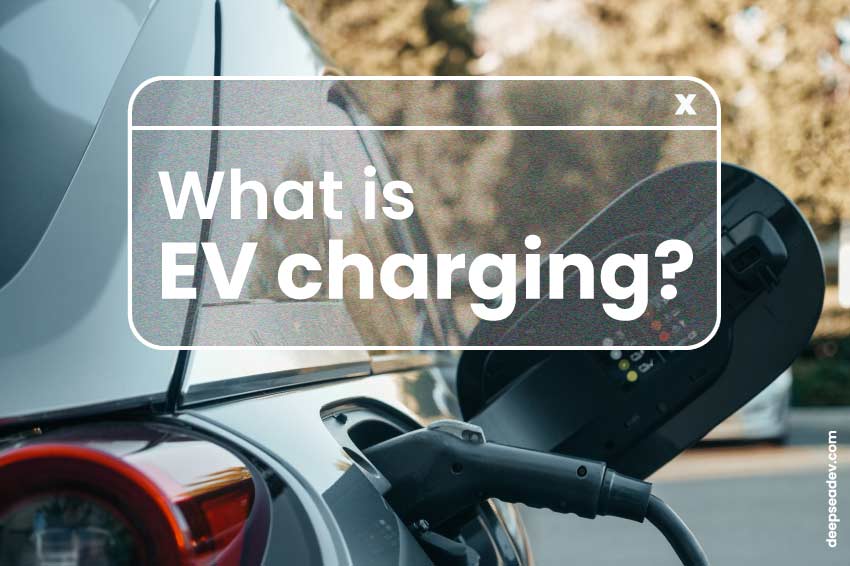EV charging is the essential process of replenishing electric vehicles with power to keep them running. This can be done with charging stations (public or private) or portable chargers.
During electric vehicle charging, an electric charger draws electrical current from the grid and transfers it to the EV using a connector or plug. The electricity is then stored in a sizable battery pack within the electric vehicle, providing power to its motor. The EV is recharged by plugging in the cable to the car’s inlet.
Why so much interest in Electric cars?
Electric cars, or EVs bring a lot of benefits. The most important has to do with the reduction of carbon emissions. Electric cars can be charged almost anywhere that has access to energy (at home, at the office, at the university, at a restaurant…), while gas cars require gas stations to do so.
People that are buying Electric Vehicles are contributing to build a more sustainable future.
Types of EV chargers
EV owners can charge their cars at different places. They can install home EV chargers, use charging stations at work, use public stations, or use portable chargers.
In each one of these places, people can access different types of chargers, which will have different features and benefits. Also, since there are several EV models available, they will have a different performance in their charging time.
Level 1
A standard charger, also known as Level 1 charging, involves connecting your EV to a standard AC power plug. Every EV comes with this Level 1 cable, it doesn’t require any installation to plug it into any standard grounded 120-V outlet.
Level 2
This type of EV charging station uses 240V electric outlets. It can be found in different places such as residential areas, public parking spaces, businesses, and commercial locations.
Compared to Level 1, Level 2 charging is significantly faster and offers smart features, connectivity options, power levels adjustment, and safety measures, making it a popular choice for home charging, apartment complexes, and universities.
Level 3
Level 3 charging, commonly referred to as rapid charging, employs direct current (DC) to directly charge an electric vehicle’s battery.
This type of charger is able to deliver high-power DC directly to the battery, making it optimal for drivers who don’t have a lot of time to stop in a place and wait for hours to fully charge the vehicle.
The great advantage of Level 3 chargers is that they can recharge a vehicle within minutes, as opposed to hours for Level 2 chargers. However, this type of charger is really expensive, and can be found only in specific places where heavy-duty EVs need to charge in a short period of time.
How long does it take to charge an EV?
The charging time for an electric vehicle (EV) depends on the type of charging station or charger that is being used.
Level 1 chargers are the slowest, providing only 3 miles of range per hour due to the limited output of a household outlet. Level 2 chargers deliver power between 3.4 kW to 22 kW. By using a maximum output of 22 kW, one hour of charging can provide approximately 20 to 30 miles range for the Electric Vehicle.
Finally, Level 3 EV chargers are the fastest option available. They deliver power between 50 kW to 80 kW. This supercharger can charge up to 80% of an EV’s battery in just 10 to 30 minutes. Though this sounds really interesting, keep in mind that level 3 chargers are not compatible with all Electric car models.

Can EV owners use any battery charger?
As we mentioned above, EV owners can use level 1 chargers at home just by plugging the car into a standard AC (Alternating Current) power plug. If the person needs to go to a different location, let’s say the shopping center, he or she can easily charge the car at a EV charging station inside this place, this will hopefully be a level 2 type.
On the other hand, Level 3 EV chargers can’t be used with every EV. Since their batteries are different, the current they support may differ. In this case it is necessary for every EV owner to check the specifications of the manufacturer regarding the EV charging compatibility with level 3 charging stations.






